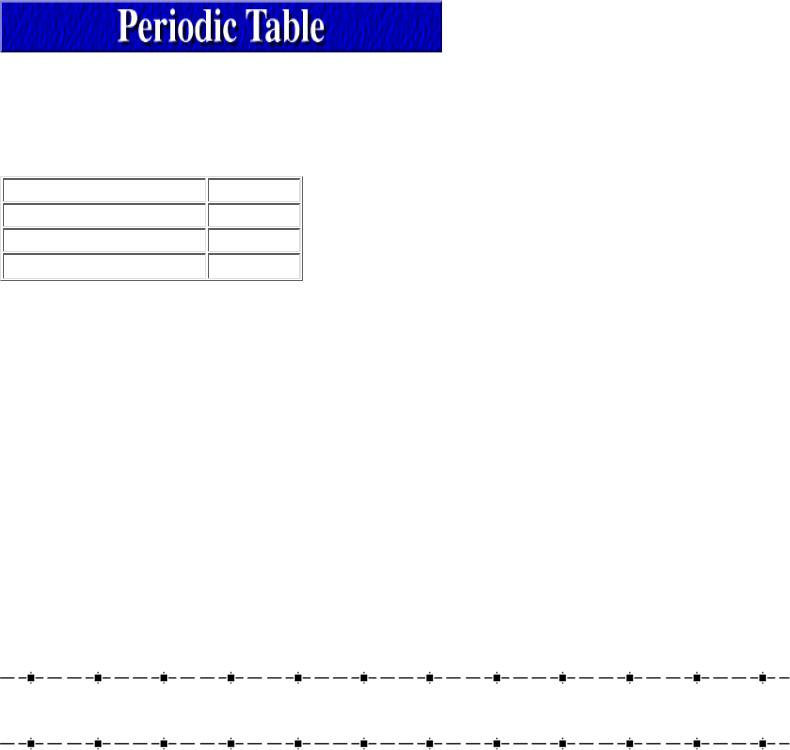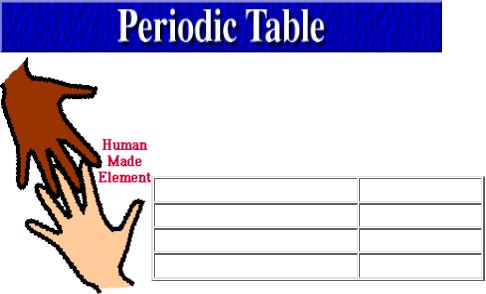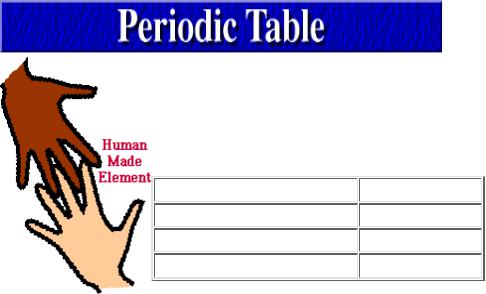
- •A Periodic Table of the Elements at Los Alamos National Laboratory
- •Hydrogen
- •Helium
- •Lithium
- •Beryllium
- •Boron
- •Carbon
- •Nitrogen
- •Oxygen
- •Fluorine
- •Neon
- •Sodium
- •Magnesium
- •Aluminum
- •Silicon
- •Phosphorus
- •Sulfur
- •Chlorine
- •Argon
- •Potassium
- •Calcium
- •Scandium
- •Tungsten
- •Zinc
- •Zirconium
- •Iron
- •Manganese
- •Antimony
- •Copper
- •Silver
- •Nickel
- •Chromium
- •Vanadium
- •Yttrium
- •Titanium
- •Molybdenum
- •Common Isotopes
- •Mercury
- •Cobalt
- •Lead
- •Gallium
- •Cesium
- •Rubidium
- •Germanium
- •Arsenic
- •Selenium
- •Bromine
- •Krypton
- •Strontium
- •Niobium
- •Technetium
- •Ruthenium
- •Rhodium
- •Palladium
- •Cadmium
- •Indium
- •Tellurium
- •Iodine
- •Xenon
- •Barium
- •Lanthanum
- •Hafnium
- •Tantalum
- •Rhenium
- •Platinum
- •Iridium
- •Osmium
- •Gold
- •Thallium
- •Bismuth
- •Polonium
- •Astatine
- •Radon
- •Francium
- •Radium
- •Actinium
- •Rutherfordium
- •Hahnium
- •Seaborgium
- •Nobelium
- •Neilsborium
- •Hassium
- •Meitnerium
- •Element 110
- •Element 111
- •Element 112
- •Mysterious Elements 114, 116, & 118
- •Cerium
- •Thorium
- •Europium
- •Praseodymium
- •Neodymium
- •Promethium
- •Samarium
- •Gadolinium
- •Terbium
- •Dysprosium
- •Holmium
- •Erbium
- •Thulium
- •Ytterbium
- •Lutetium
- •Protactinium
- •Uranium
- •Neptunium
- •Plutonium
- •Americium
- •Curium
- •Berkelium
- •Californium
- •Einsteinium
- •Fermium
- •Mendelevium
- •Lawrencium
- •Element Listing
- •Tell us or ask us
- •What is the Periodic Table?
- •How to Use the Periodic Table
- •Nutshell Chemistry
- •Mendeleev's Table
- •PERIODIC TABLE OF THE ELEMENTS

Actinium
 Actinium
Actinium
Neutron source.
History
(Gr. aktis, aktinos, beam or ray). Discovered by Andre Debierne in 1899 and independently by F. Giesel in 1902. Occurs naturally in association with uranium minerals. Actinium-227, a decay product of uranium-235, is a beta emitter with a 21.6-year half-life. Its principal decay products are thorium-227 (18.5-day half-life), radium-223 (11.4-day half-life), and a number of short-lived products including radon, bismuth, polonium, and lead isotopes. In equilibrium with its decay products, it is a powerful source of alpha rays. Actinium metal has been prepared by the reduction of actinium fluoride with lithium vapor at about 1100 to 1300-degrees C. The chemical behavior of actinium is similar to that of the rare earths, particularly lanthanum. Purified actinium comes into equilibrium with its decay products at the end of 185 days, and then decays according to its 21.6-year half-life. It is about 150 times as active as radium, making it of value in the production of neutrons.
Isotope
Sources: CRC Handbook of Chemistry and Physics and the American Chemical Society.
Last Updated: 12/19/97, CST Information Services Team
http://pearl1.lanl.gov/periodic/elements/89.html [3/6/2001 8:38:20 AM]

Rutherfordium
Rutherfordium
Proposed name
History
In 1964, workers at the Joint Nuclear Research Institute at Dubna (U.S.S.R.) bombarded plutonium with accelerated 113 to 115 MeV neon ions. By measuring fission tracks in a special glass with a microscope, they detected an isotope that decays by spontaneous fission. They suggested that this isotope, which had a half-life of 0.3 +/- 0.1 s might be 260-104, produced by the following reaction: 242Pu + 22Ne --> 104 +4n.
Element 104, the first transactinide element, is expected to have chemical properties similar to those of hafnium. It would, for example, form a relatively volatile compound with chlorine (a
tetrachloride).
The Soviet scientists have performed experiments aimed at chemical identification, and have attempted to show that the 0.3-s activity is more volatile than that of the relatively nonvolatile actinide trichlorides. This experiment does not fulfill the test of chemically separating the new element from all others, but it provides important evidence for evaluation.
New data, reportedly issued by Soviet scientists, have reduced the half-life of the isotope they worked with from 0.3 to 0.15 s. The Dubna scientists suggest the name kurchatovium and symbol Ku for element 104, in honor of Igor Vasilevich Kurchatov (1903-1960), former Head of Soviet Nuclear Research.
Isotopes
In 1969 Ghiorso, Nurmia, Harris, K.A.Y. Eskola, and P.L. Eskola of the University of California at Berkeley reported that they had positively identified two, and possibly three, isotopes of Element 104. The group indicated that, after repeated attempts, they produced isotope 260-104 reported by the Dubna groups in 1964.
The discoveries at Berkeley were made by bombarding a target of 249Cf with 12C nuclei of 71 MeV, and 13C nuclei of 69 MeV. The combination of 12C with 249Cf followed by instant emission of four neutrons produced Element 257-104. This isotope has a half-life of 4 to 5 s,
http://pearl1.lanl.gov/periodic/elements/104.html (1 of 2) [3/6/2001 8:38:20 AM]

Rutherfordium
decaying by emitting an alpha particle into 253No, with a half-life of 105 s.
The same reaction, except with the emission of three neutrons, was thought to have produced 258-104 with a half-life of about 1/100 s.
Element 259-104 is formed by the merging of a 13C nuclei with 249Cf, followed by emission of three neutrons. This isotope has a half-life of 3 to 4 s, and decays by emitting an alpha particle into 255No, which has a half-life of 185 s.
Thousands of atoms of 257-104 and 259-104 have ben detected. The Berkeley group believes their identification of 258-104 is correct, but attaches less confidence to this work than to their work on 257-104 and 259-104.
The claims for discovery and the naming of Element 104 are still in question. The Berkeley group proposes for the new element the name rutherfordium (symbol Rf), in honor of Ernest R. Rutherford, a New Zealand physicist. Meanwhile, the International Union of Pure and Applied Physics has proposed using the neutral temporary name, unnilquadium.
Sources: CRC Handbook of Chemistry and Physics and the American Chemical Society.
Last Updated: 12/19/97, CST Information Services Team
http://pearl1.lanl.gov/periodic/elements/104.html (2 of 2) [3/6/2001 8:38:20 AM]

Hahnium
Dubnium
Proposed Name
History
In 1967 G.N. Flerov reported that a Soviet team working at the Joint Institute for Nuclear Research at Dubna may have produced a few atoms of 260-105 and 261-105 by bombarding 243Am with 22Ne. The evidence was based on time-coincidence measurements of alpha energies.
In 1970 Dubna scientists synthesized Element 105 and, by the end of April 1970, "had investigated all the types of decay of the new element and had determined its chemical properties," according to a report in 1970. The Soviet group had not proposed a name for 105. In late April 1970, it was announced that Ghiorso, Nurmia, Haris, K.A.Y. Eskola, and P.L. Eskola, working at the University of California at Berkeley, had positively identified element 105. The discovery was made by bombarding a target of 249Cf with a beam of 84 MeV nitrogen nuclei in the Heavy Ion Linear Accelerator (HILAC). When a 15N nuclear is absorbed by a 249Cf nucleus, four neutrons are emitted and a new atom of 260-105 with a half-life of 1.6 s is formed. While the first atoms of Element 105 are said to have been detected conclusively on March 5, 1970, there is evidence that Element 105 had been formed in Berkeley experiments a year earlier by the method described.
Ghiorso and his associates have attempted to confirm Soviet findings by more sophisticated methods without success. The Berkeley Group proposed the name hahnium -- after the late German scientist Otto Hahn (1879-1968) -- and symbol Ha. However, the International Union of Pure and Applied Chemistry panel members in 1977 recommended that element 105 be named to Dubnium (symbol Db) after the site of the Joint Institute for Nuclear Research in Russia. Unfortunately, the name hahnium will not be used again according to the rules for naming new elements. Some scientists still use the earlier name of hahnium because it had been used for about 25 years.
http://pearl1.lanl.gov/periodic/elements/105.html (1 of 2) [3/6/2001 8:38:20 AM]

Hahnium
Isotopes
In October 1971, it was announced that two new isotopes of element 105 were synthesized with the heavy ion linear accelerator by A. Ghiorso and co-workers a Berkeley. Element 261-105 was produced both by bombarding 250Cf with 15N and by bombarding 249Bk with 16O. The isotope emits 8.93-MeV alpha particles and decays to 257Lr with a half-life of about 1.8 s. Element 262-105 was produced by bombarding 249Bk with 18O. It emits 8.45 MeV alpha particles and decays to 258Lr with a half-life of about 40 s. Seven isotopes of element 105 (unnilpentium) are now recognized.
Sources: CRC Handbook of Chemistry and Physics and the American Chemical Society.
Last Updated: 12/19/97, CST Information Services Team
http://pearl1.lanl.gov/periodic/elements/105.html (2 of 2) [3/6/2001 8:38:20 AM]
